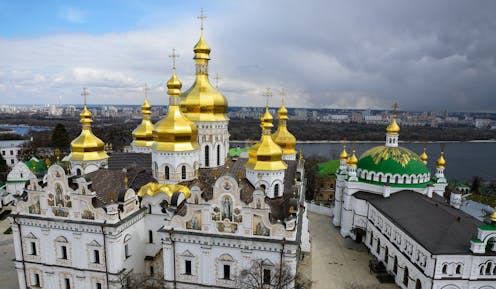
The tragic loss of life and desperate living conditions caused by the Russian invasion of Ukraine have gripped the world’s attention.
However, another threat looms for the country’s heritage architecture, including United Nations Educational, Scientific and Cultural Organization (UNESCO) World Heritage monuments of global significance.
These buildings lie directly in the line of fire as Russian forces advance on Kyiv and increase bombardments near Lviv. UNESCO Director-General Audrey Azoulay has called for the protection of these testimonies to the country’s “rich history.”
Medieval, baroque monuments
Among the UNESCO World Heritage monuments in immediate danger of destruction is the irreplaceable 11th-century cathedral of St. Sophia in Kyiv. It is the most important Christian monument of Kievan Rus (862-1242), the first eastern Slavic state, and is dangerously close to Independence Square where trucks have unloaded sand in anticipation of a possible Russian assault.
St. Andrew’s Church (1744-67), a baroque monument of global importance, is 400 metres — a five minute walk — from the Ministry of Foreign Affairs building, another likely target as Russia has been shelling government buildings.
Sacred to Ukrainian, Russian Orthodox Christians
Some endangered monuments are as sacred to Russian Orthodox Christians as they are to Orthodox Christians in Ukraine. As the cradle of the Russian Orthodox Church, St. Sophia’s Cathedral is as important to Russian Orthodox Christians as St. Peter’s Basilica is to Roman Catholics.
The UNESCO-recognized Pechersk-Lavra monastic complex (begun in 1051) is one of the principal shrines of eastern Europe. It comprises multiple above-ground monastic buildings and bell towers, and its 600-metre network of catacombs contains chapels, relics and monks’ tombs.
St. Andrew’s Church, on a precipitous hill in the historic Podil neighbourhood, is believed to have been the place where the Apostle Andrew raised a cross and predicted that Kyiv would become the first centre of Christianity in Slavic lands.
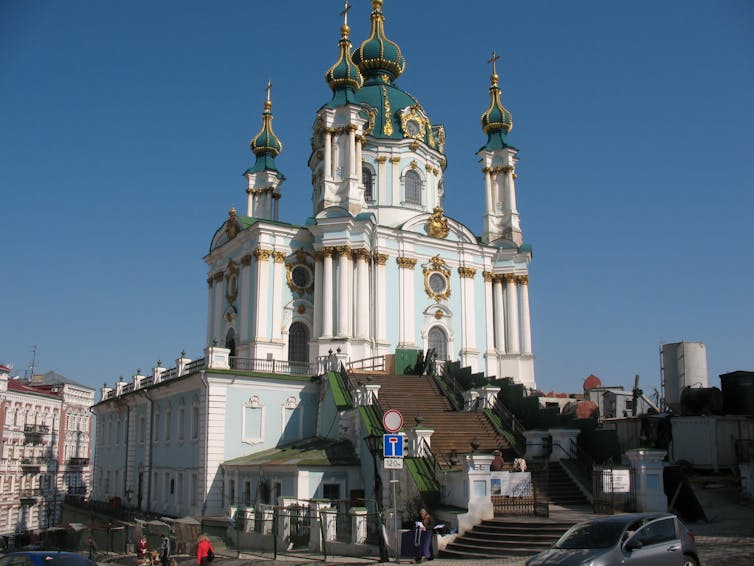
The church, designed by Empress Elizabeth’s court architect Bartolomeo Rastrelli (1744-61), is an original fusion of Orthodox, Italian baroque and French rococo forms with an interior united by rich, gilded scrollwork.
Mosaics, frescoes
These UNESCO world heritage monuments, and numerous buildings not included in the list, are unique to the world.
St. Sophia was built to rival the greatest church of Orthodox Christianity, Hagia Sophia (now a mosque), in Constantinople — now present-day Istanbul, Turkey.
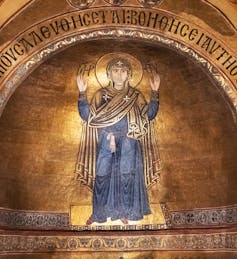
St. Sophia preserves priceless early medieval mosaics and frescoes, including Christ Pantocrator and The Virgin at Prayer, as well as numerous frescoes of the period. Ukrainian and Russian artists alike have been using The Virgin at Prayer as their Facebook profile photo to protest the invasion.
Later parts of St. Sophia’s exterior and its monastic outbuildings are also outstanding examples of Ukranian baroque (also called “Cossack baroque”). Unique to the region, the 17th- to 18th-century style combines traditional forms with lace-like stuccoes and curvilinear shapes creatively adapted from western models.
Historic buildings of Lviv
In Lviv, one of the most important Renaissance and baroque urban centres in Eastern Europe, buildings and artworks of inestimable heritage value are in danger of obliteration.
Among the historic buildings of Lviv are Christian and Jewish places of worship. While art historian Ihor Zhuks notes that a mosque may have existed there in the 13th century, this historic building no longer exists. But Muslim communities continue to worship in Lviv.
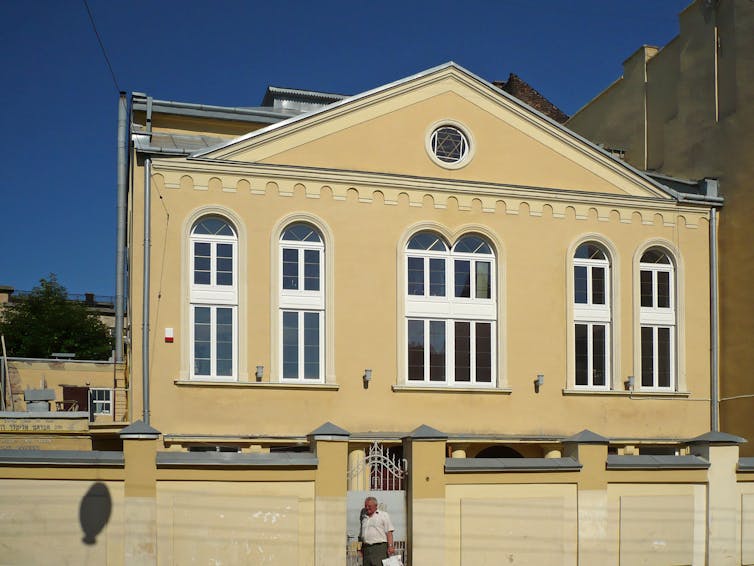
Prior to the Second World War, Lviv was more than one-third Jewish, but the Jewish community was nearly annihilated in the Holocaust. As historian Jeffrey Veidlinger writes, “German soldiers murdered 1.5 million Jews in the areas that are now Ukraine, often with the collaboration of Ukrainian militias … and with the help of local auxiliary police.”
Many synagogues, including at least 38 in Lviv alone, were destroyed in the Second World War. A memorial plaza built in 2016, the Space of Synagogues, speaks to this destruction. Lviv’s Jewish community is no stranger to the loss of architectural patrimony.
Standing today are the Jakob Glanzer Shul (1844-46) and the Tsori Gilod Synagogue, also known as Tsori Hilgod. The latter was built by architect Albert Kornblüth in 1925 in a neo-Renaissance style and features a band of semicircular arches at the top, characteristic of early synagogue architecture. It is a precious reminder of Lviv’s Jewish heritage. The Times of Israel reported March 7 that the synagogue has offered refuge to people fleeing Kharkiv.
The oldest synagogue in Lviv before 1942 was the Gothic-Renaissance Golden Rose (Turay Zahav), built by the Italo-Swiss architect Paolo Italus in 1582. Its ruins were stabilized as part of the Space of Synagogues memorial by an international team.
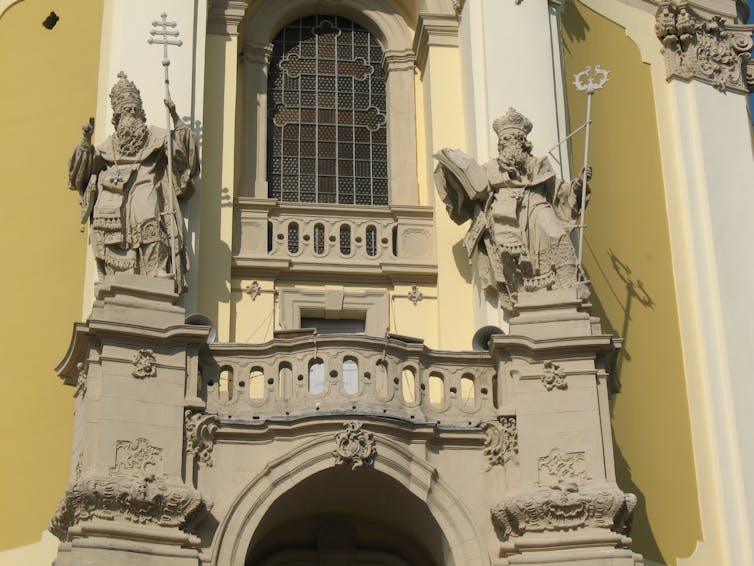
Also in Lviv, St. George’s Uniate Cathedral built in 1745-70, designed by architect Bernhard Meretyn, includes some of the best-preserved sculptures by Johann-Georg Pinzel (c.1720-62) and combines Germanic baroque and Ukrainian Orthodox forms.
Much of Pinsel’s work was already damaged or destroyed in the Second World War and under Soviet occupation.
Pinzel was the most important sculptor in Galicia, the historic eastern European region spanning present-day western Ukraine and southeastern Poland, and the subject of a 2013 exhibition at the Louvre.
UNESCO-recognized wooden churches
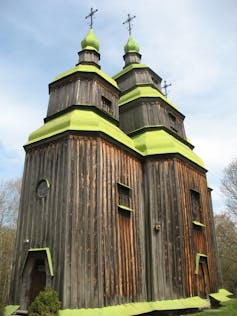
Ukraine is also home to hundreds of wooden churches of inestimable cultural value. The UNESCO-recognized wooden Tserkvas (churches) of the Carpathian Region (16th to 19th centuries) represent a unique building tradition in Ukraine and Poland.
However UNESCO only recognizes a tiny number of such buildings.
Most are still in rural areas across central and western Ukraine. Others have been relocated to outdoor folk museums near Kyiv and Lviv, which potentially puts them in the path of destruction. The National Museum of Folk Architecture and Life of Ukraine is a priceless collection of traditional 17th- to 20th-century wooden churches from across the country and is close to recent bombardments.
Volunteers rush to protect cultural property
Volunteers have been desperately trying to protect Ukranian monuments from bombardments.
If these buildings are destroyed, can they be rebuilt? Yes, Ukrainians have done it before. Two sprawling medieval churches in Kyiv (St. Michael’s Monastery and the Dormition Cathedral) that were demolished by the Soviets and Nazis were reconstructed in 1999-2000.
Their golden domes and colourful facades look fine at a distance. But up close, their ornament — once among the finest examples of Ukrainian baroque — looks mechanical and impersonal. Once lost, such buildings can be rebuilt. But a replica can never compensate for what has been lost.
Gauvin Alexander Bailey does not work for, consult, own shares in or receive funding from any company or organisation that would benefit from this article, and has disclosed no relevant affiliations beyond their academic appointment.
This article was originally published on The Conversation. Read the original article.







